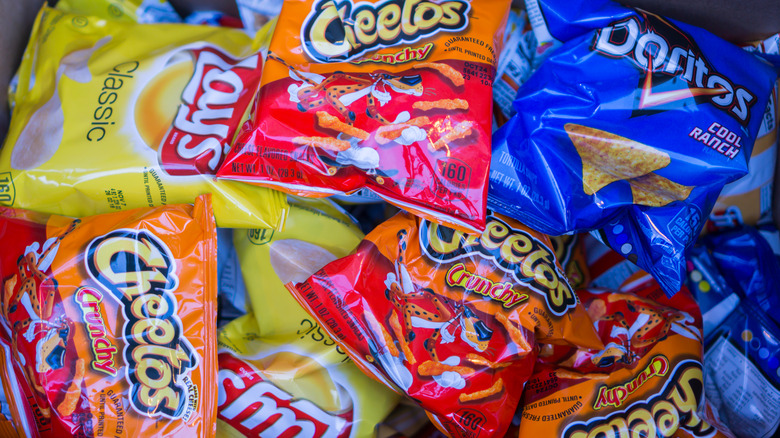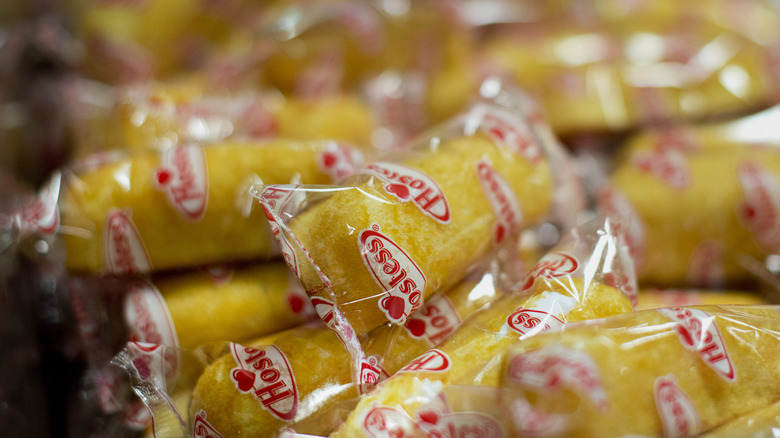Here's What It Means When Food Packaging Expands
We've all been there. You grab a pack of chips or a snack cake, and the food packaging is expanded to an unsettling level. In fact, the packaging has no give at all. One wrong move and that baby's popping open. So what gives? Why does this happen to some food items and not others? And why does it happen to some food items some of the time, but not always?
A few different things can cause food packaging to expand or "bloat." According to Taste of Home, occasionally, changes in air pressure can cause bloated packaging. You might spot this type of bloating if you're on a plane (hello, tiny bag of bloated pretzels) or in a particularly high-altitude destination, such as Denver. However, sometimes the source of the bloat is a little more sinister. Occasionally, the extra air inside the packaging is actually carbon dioxide created by food that has gone bad.
Can you eat food in a bloated package?
If you can easily and with certainty say that your food item's bloated packaging is due to a change in air pressure, then you're safe to go ahead and chow down. If, however, there's a chance the food is spoiled, you'll want to steer clear of this particular snack. Look at the food item's expiration date to more easily determine if it's past its prime. Taste of Home also recommends storing your packaged food items away from light and heat, as this can prevent future bloat. Additionally, if you notice bloated packaging while shopping at the grocery store, avoid purchasing that food item. If the bloating is indeed caused by spoilage, eating the contained food could result in food poisoning.
In general, the publication says that foods with more moisture content are most likely to experience bloated packaging due to spoilage. Foods without a lot of moisture content, such as dried or dehydrated fruit, for example, are less likely to experience this spoilage-related bloat.

